What Is Thoracic Spondylosis?
Thoracic Spondylosis Is Pain in the back is the most common type of pain for middle-aged individuals and those above the age of 45. The cause for these back pains is the degeneration of the spine due to continued stressing of the bones, disc, and ligaments in old age.
The disease is most common in the lumbar and cervical spine. Most movements of the vertebral column take place in the lumbar and cervical vertebrae. Apart from the two vertebrae, the thoracic spine also gets degenerated with old age and may risk the acquisition of thoracic spondylosis.
Thoracic spondylosis is a rare disorder and is not common as the lumbar and cervical degeneration. It is predominantly caused by old age and seldom results from normal wear and tear.
The painful condition that is felt in the mid-back region of the patient is what is referred to as spondylosis. The purpose of this article is to get a deeper understanding of thoracic spondylosis.

Definition
By definition, thoracic spondylosis is a spine medical condition that is characterized by pain on the upper back and often affects people aged 45 and above. The diseases are less common compared to spinal or cervical spondylosis and are often caused by the degeneration of soft tissues along the thoracic spine.
As the body ages, it is often accompanied by chemical changes in the body. This is marked by the dehydration of the cartilaginous pads that cushion the vertebrae or discs. Old age weakens the discs, and they become sensitive to normal stresses applied to the spine.
As a result of this breakdown, painful conditions start to develop thereby causing thoracic spondylosis. In thoracic spondylosis, the tendons and ligaments of the thoracic spine get narrowed and dried resulting in the misalignment of the bones and spines. The disease can also lead to spinal stenosis.
Types of Spondylosis

Thoracic Spondylosis
Spondylosis can also manifest itself in the upper back of the spine. Potential features of this condition include pain that is concentrated in the upper back, pain centered in the middle of your back, and post-rest stiffness that decreases the natural flexibility of the mid-back.
Also, you might experience occasional pains that manifest after the movement of the torso in a particular direction.
Cervical Spondylosis
Symptomatic spondylosis sometimes occurs in the neck region in a part of the spine known as the cervical system. If the conditions only manifest in the nerve roots and not the spinal cord, your problems may vary to include relatively common complaints such as post-rest stiffness that reduces shoulder and neck movements
Intermittent pain, unusual tissue sensitivity in the region around the shoulders and neck, pain that radiates downwards to your shoulders and upper limbs, severe headaches at the rear of your head, unusually weak muscles in your upper arms and hands, or tingling and numbness in your shoulders and upper limbs.
In some instances, the condition can decrease your ability to maintain your body balance. The pressure exerted on the spinal cord can cause other additional symptoms to the spine. Such problems include difficulty in swallowing and impaired bladder and bowel functions.
Lumbar Spondylosis
Problems associated with the lower back can cause much discomfort. Lumbar spondylosis in particular causes more constant pains that gradually deprive with rest, intermittent pains, more constant pains that increase with increase in body activity
Unusual sensitivity of the tissues in the lower back, post-rest stiffness that decreases the flexibility of the lower back, impaired ability to walk normally, and unexpected loss of sensation in your lower back.
Lumbar Spondylosis also features other sciatica symptoms such as pain, tingling or loss of muscle strength, loss of sensation anywhere along the course of your sciatic nerve. Spinal cord pressure rarely occurs, and when it does, it is accompanied by impaired bladder and bowel function.
Causes
The primary cause of this condition is age. In fact, most of the patients suffering from the disease are mainly 45 years and above. The normal aging process wears out the discs and makes them brittle. That said, the discs start tearing and become extremely weak.
The small protrusions formed by the stiff and brittle discs exert undue pressure in the tissues and joints around the region resulting in pain.
Signs & Symptoms
Since the functions of the thoracic spine are not similar to those of the lumbar and cervical vertebrae, thoracic spondylosis occurs as an after-effect wear and tear of the spine in another location.
However, the case is not always right, and therefore the following symptoms should be used to confirm the presence of the disorder:
- Tingling or numbness of the upper and lower extremities.
- Pain in the upper back especially during the morning
- Stiffness of the higher or mid-back
- Weakening of the muscles
- Discoordination
- Trouble ambulating
Diagnosis
Specialists that deal with thoracic spondylosis include Neurosurgeons, Spine Surgeons, or Physiatrist Specialists. The following tests can be done to diagnose the illness:
Tests
- The physician will go through the individual’s medical history and conduct a physical examination of the spine to check for any unusual symptoms.
- Imaging studies such as X-rays, MRI, and CT scan can be used as confirmation diagnosis and also test the extent of degeneration of the thoracic spine.
Management & Treatment
The treatment option best suited for this spine disorder depends on the level of degeneration experienced in the thoracic region. There exists conservative as well as medical care choices.
Conservative Measures
- Rest
- Ultraviolet Therapy
- Acupuncture
- Exercise
- Heat and Infra-red light treatment
- Back Braces
- Chiropractic Therapy
- Heal Therapy
Medical Approach
NSAIDs
- Treat inflammation
- Control pain
- Prescriptions include Naproxen, Motrin and Celebrex.
Muscle Relaxants
- Optimizes therapy physically
- Prescriptions are usually for muscles spasms.
Physical Therapy
- Strengthens the spine muscles
- Pain relievers
Prognosis
The prognosis for this condition is good for partial recovery from the signs and symptoms.
References
- Lower thoracic degenerative spondylithesis with concomitant lumbar spondylosis.
- Hsieh PC1, Lee ST1, Chen JF2.
- Clin Neurol Neurosurg. 2014 Mar;118:21-5. doi: 10.1016/j.clineuro.2013.11.019. Epub 2013 Dec 6.
- Spondylolisthesis of the thoracic spine. Case report.
- Shimada Y1, Kasukawa Y, Miyakoshi N, Hongo M, Ando S, Itoi E.
- J Neurosurg Spine. 2006 May;4(5):415-8.
- Nonoperative treatment of symptomatic spondylolysis.
- Kurd MF1, Patel D, Norton R, Picetti G, Friel B, Vaccaro AR.
- J Spinal Disord Tech. 2007 Dec;20(8):560-4.

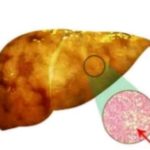

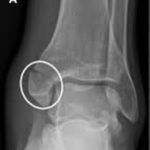
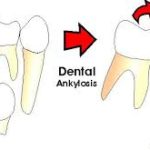
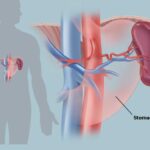
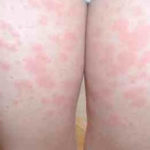
This page really has all of the information I wanted about this subject and didn’t know who to ask.